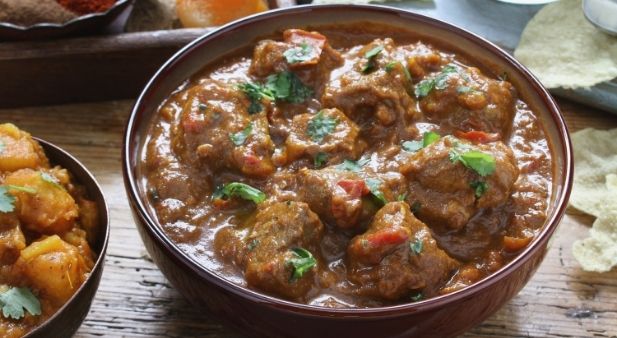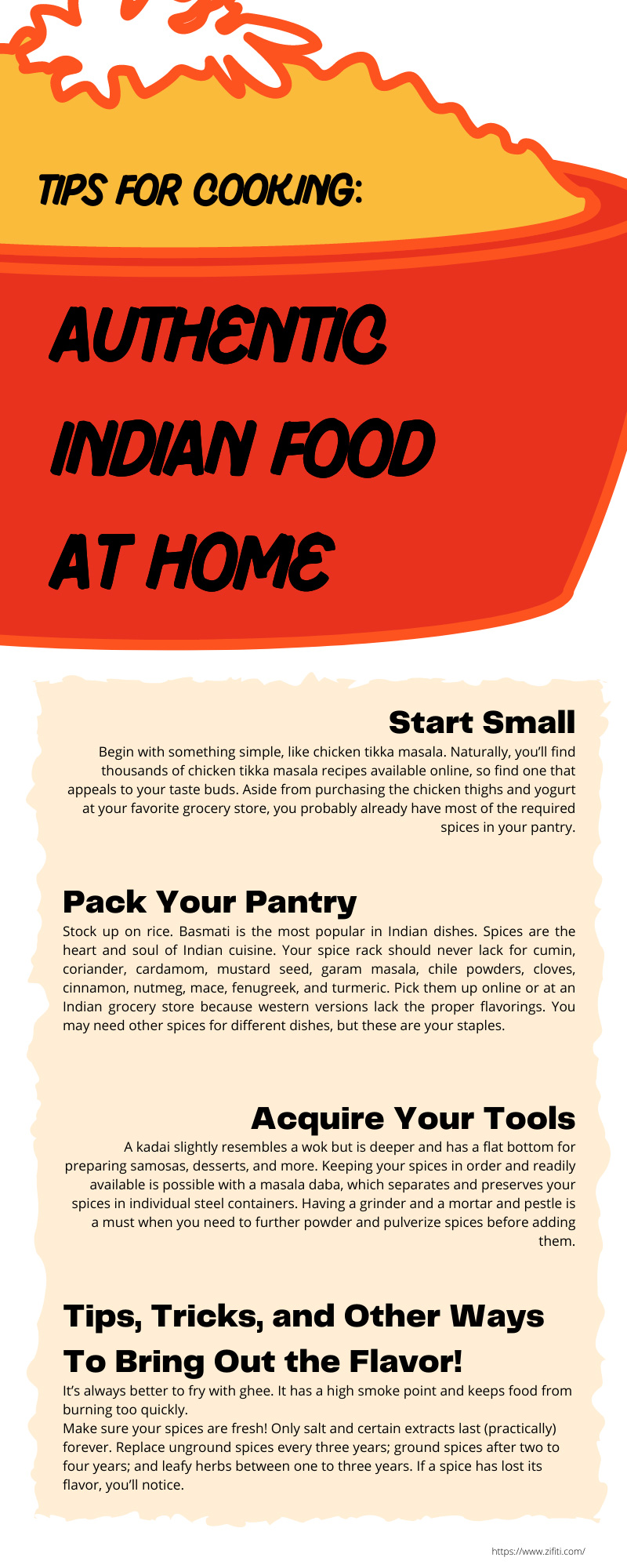April 30, 2021
Tips for Cooking Authentic Indian Food at Home

Indian food is rich in flavor and variety. Want to bring this wonderful cuisine to your home? Here are tips for cooking authentic Indian food at home.
Indian cuisine is rich in flavor, variety, and history. Yet, outside of Indian households, it’s rare to find many western homes preparing and serving up even basic Indian foods like butter chicken or naan. Honestly, it can be intimidating to try preparing any new dish, and Indian food presents a huge selection of unfamiliar spices, tools, and ingredient combinations. At the same time, and like any other form of cuisine, you just need to learn some basic skills and the basic building blocks necessary to tackle more challenging recipes later. Even the mistakes you make along the way are
learning opportunities! To get you started on this long, rewarding, and delicious journey, here are several tips for cooking authentic Indian food at home.
If you love Indian food at restaurants but never cooked it before, think about your favorite dish, and commit to whipping up a batch for you and your friends or family. Begin with something simple, like chicken tikka masala. Naturally, you’ll find thousands of chicken tikka masala recipes available online, so find one that appeals to your taste buds. Aside from purchasing the chicken thighs and yogurt at your favorite grocery store, you probably already have most of the required spices in your
pantry.
You will, however, need to purchase garam masala and kashmiri chili. Of course, this will allow you to explore all the foods, spices, and Indian cookware you’ll require if you stick with cooking Indian food as a hobby. Prepare the chicken tikka masala according to the recipe, then serve it up. Not so difficult, right? Now you’re ready to move on to the next recipe, then the next, then the one after that! As a suggestion, pick up a cookbook of Indian recipes to spark ideas and guide you in preparing future meals.

Pack your pantry
If you are serious about Indian cooking, stock your shelves with an abundance of necessary staples and spices. So many dishes are possible to make with a few basic ingredients, so keep the following close at hand in your kitchen. Stock up on rice. Basmati is the most popular in Indian dishes. There are others that you can pick up as recipes require, but a good stock of basmati goes far. Spices are the heart and soul of Indian cuisine. Enrich your spice rack with cumin, coriander, cardamom, mustard seed, garam masala, chile powders, cloves, cinnamon, nutmeg, mace, fenugreek, and turmeric. Order them through our site because western versions lack the proper flavorings and thus authenticity. You may need other spices for different dishes, but you’ll return to these repeatedly.
Plan to enjoy making plenty of bread to accompany your meals, from soft and fluffy naan to crispy papadum. Be ready to bake by stocking up on different types of flour, including whole wheat flour, Maida all-purpose flour, rice flour, semolina, cornflour, and gram flour. Beans and lentils are the base of many a beguiling dish, so have stores of mung, black-eyed, and kidney beans, as well as chickpeas and lentils, readily accessible. Get a jar of ghee, a kind of clarified butter useful for higher heat cooking, sautéing, and baking with its rich nutty taste. You’ll be preparing many different kinds of foods with it.
Acquire your tools
While you probably already have a selection of pots, saucepans, and other utensils in your kitchen that will work for Indian food preparation, there are certain types of Indian cookware and tools that can make it easier to prepare meals while ensuring greater authenticity. For example, if you plan to prepare bread like roti, puris, and chapatis, you should roll them out with a belan and chakla—respectively, a small rolling pin and a flat wooden board. A charni is also indispensable for breadmaking when you use it to remove lumps from flours, ensuring your dough stays smooth.
A Kadai slightly resembles a wok but is deeper and has a flat bottom for preparing samosas, desserts, and more. Keeping your spices in order and readily available is possible with a masala daba, which separates and preserves your spices in individual steel containers (which often include adorable little measuring spoons). Having a grinder and a mortar and pestle is a must when you need to further powder and pulverize spices before adding them. Are you planning some deep-fried desserts? The
jharra allows you to turn food safely while draining excess oil.
There are many more tools available, but again, it’s good to purchase them as you need them for specific recipes. Consider whether you’ll use a specific tool in the future or if it’ll just take up space in your drawers or cabinets. You can purchase most of them online or at your local Indian grocery store.
Tips, Tricks, and Other Ways To Bring Out the Flavor!
If you really want to improve your Indian cooking skills, seek out online or in-person classes offered by your local park district, community center, or adult learning facility.
Mentoring and classroom cooking are the most effective ways to expand your skills and ensure you’re progressing well. If you’re on your own, there are plenty of videos available with step-by-step instructions. Here some other general tips for cooking authentic Indian food at home.
- Always wash your vegetables before you cut or peel them, then peel them thinly to ensure you’re not wasting any vitamins or nutrients.
- When frying or sautéing, heat up the oil first before adding the ingredients. Otherwise, if they sit in the oil as it heats up, the vegetables and spices will burn, and you risk damaging the pan. It also eliminates unnecessary cleanup later.
- It’s always better to fry with ghee. It has a high smoke point and keeps food from burning too quickly.
- Sample your recipes as you cook them to better assess whether you’re achieving the flavor you desire. Start slowly with seasonings, then work your way toward the level of taste and spice you desire.
- Make sure your spices are fresh! Only salt and certain extracts last (practically) forever. Replace unground spices every three years; ground spices after two to four years; and leafy herbs between one to three years. If a spice has lost its flavor, you’ll notice.
- Keep your kitchen and cooking area clean, and arrange what you’ll need beforehand. A messy kitchen means greater hassles and less fun while you cook!


